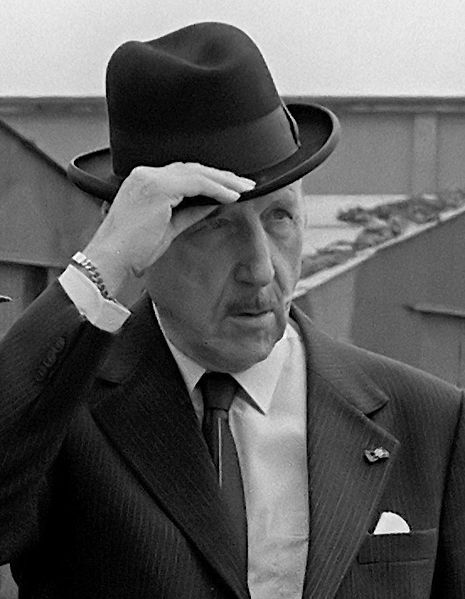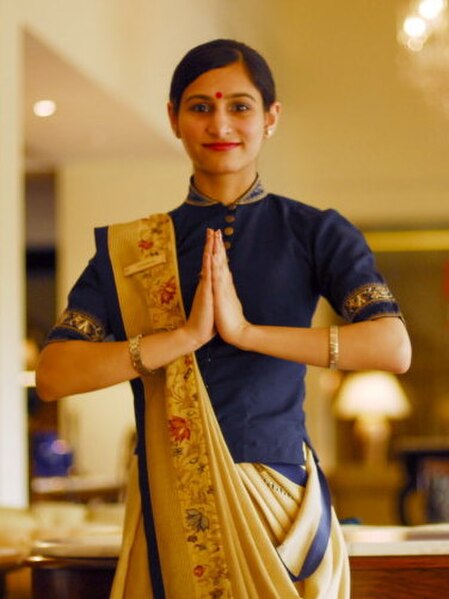Greeting is an act of communication in which human beings intentionally make their presence known to each other, to show attention to, and to suggest a type of relationship or social status between individuals or groups of people coming in contact with each other. Greetings are sometimes used just prior to a conversation or to greet in passing, such as on a sidewalk or trail. While greeting customs are highly culture- and situation-specific and may change within a culture depending on social status and relationship, they exist in all known human cultures. Greetings can be expressed both audibly and physically, and often involve a combination of the two. This topic excludes military and ceremonial salutes but includes rituals other than gestures. A greeting, or salutation, can also be expressed in written communications, such as letters and emails.

The civilian Secretary General of NATO Joseph Luns from the Netherlands tips his hat at a troop review in 1983, in lieu of a military salute. This (the full gesture is shown here) was by then becoming old-fashioned as a general social greeting, but had once been normal.
Chinese greeting (Fist-and-palm) practised by Tsai Ing-wen, President of the Republic of China (Taiwan)
Namaste greeting – a common cultural practice in India
Denis Thatcher, husband of former Prime Minister of the United Kingdom Margaret Thatcher, greets former American First Lady Nancy Reagan by kissing her hand, 1988.
Conversation is interactive communication between two or more people. The development of conversational skills and etiquette is an important part of socialization. The development of conversational skills in a new language is a frequent focus of language teaching and learning. Conversation analysis is a branch of sociology which studies the structure and organization of human interaction, with a more specific focus on conversational interaction.
A group of men chatting in Ponce, Puerto Rico
Discussion between two old friends






